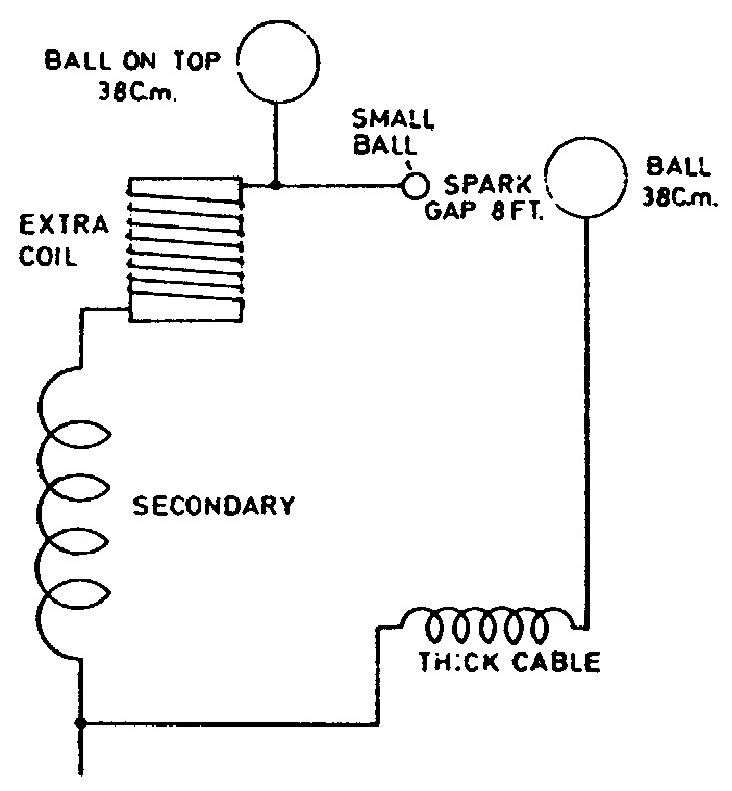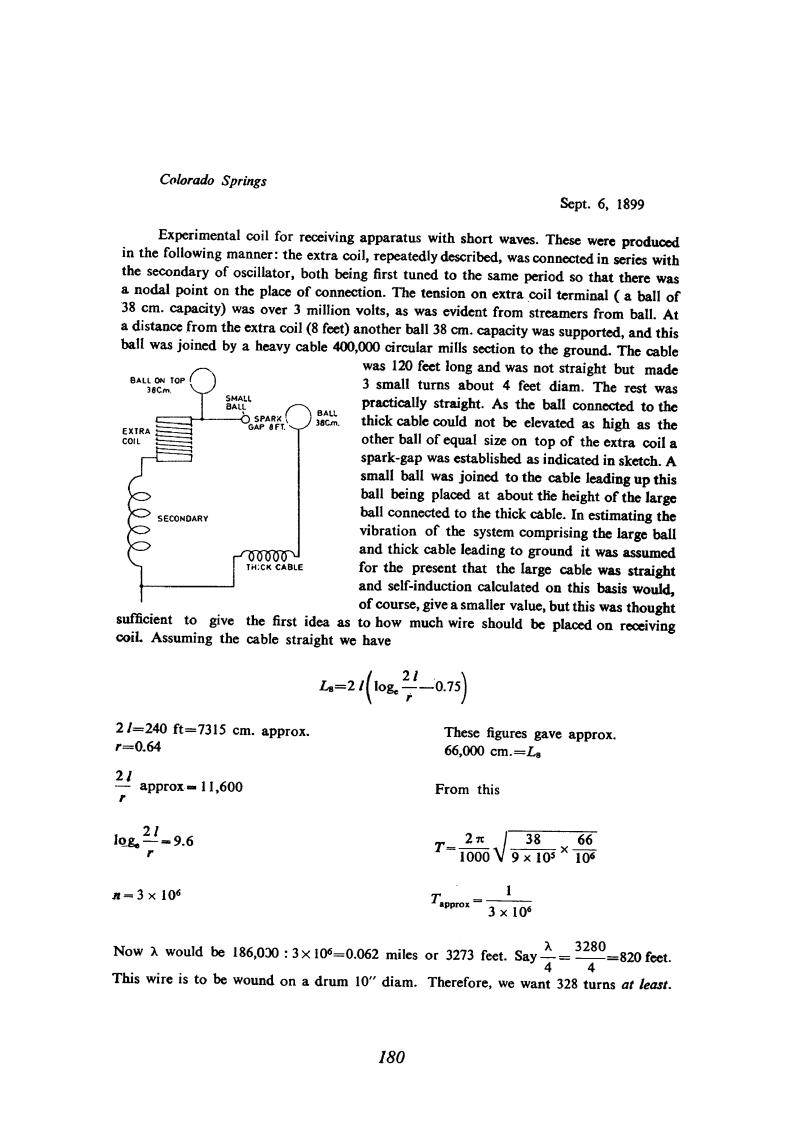
Nikola Tesla Books
Colorado Springs
Sept. 6, 1899
Experimental coil for receiving apparatus with short waves. These were produced in the following manner: the extra coil, repeatedly described, was connected in series with the secondary of oscillator, both being first tuned to the same period so that there was a nodal point on the place of connection. The tension on extra coil terminal (a ball of 38 cm. capacity) was over 3 million volts, as was evident from streamers from ball. At a distance from the extra coil (8 feet) another ball 38 cm. capacity was supported, and this ball was joined by a heavy cable 400,000 circular mills section to the ground. The cable was 120 feet long and was not straight but made 3 small turns about 4 feet diam. The rest was practically straight.
As the ball connected to the thick cable could not be elevated as high as the other ball of equal size on top of the extra coil a spark-gap was established as indicated in sketch. A small ball was joined to the cable leading up this ball being placed at about the height of the large ball connected to the thick cable. In estimating the vibration of the system comprising the large ball and thick cable leading to ground it was assumed for the present that the large cable was straight and self-induction calculated on this basis would, of course, give a smaller value, but this was thought sufficient to give the first idea as to how much wire should be placed on receiving coil. Assuming the cable straight we have
$! {L_{s} = 2 l \left({\log_{e}{2 l \over r}-0.75}\right)} $!
| 2l = 240 ft = 7315 cm. approx. | These figures gave approx. |
| r = 0.64 | 66,000 cm. = Ls |
| $! {2 l \over r} $! approx. = 11,600 | From this |
| $! {\log_{e} {2 l \over r}} $! = 9.6 | $! {T = {{2 \pi \over 1000} \sqrt{{38 \over {9 \times 10^{5}}} \times {66 \over 10^{6}}}}} $! |
| n = 3 x 106 | Tapprox. = $! {1 \over {3 \times 10^{6}}} $! |
Now λ would be 186,000 : 3 x 106 = 0.062 miles or 3273 feet. Say $! {{λ \over 4} = {3280 \over 4} =} $! 820 feet. This wire is to be wound on a drum 10" diam. Therefore, we want 328 turns at least.
180
September 6-7
In calculating the wavelength for the cable and ball Tesla made an arithmetical error. For the calculated T, the wavelength ought to be about ten times less, so that his assumption that on September 7th, he got vibrations of the system consisting of a ball of capacity 38 cm and 120 feet of cable is probably false. It is more likely that the experimental coil was excited by the coupled system of primary, secondary and extra coil.


